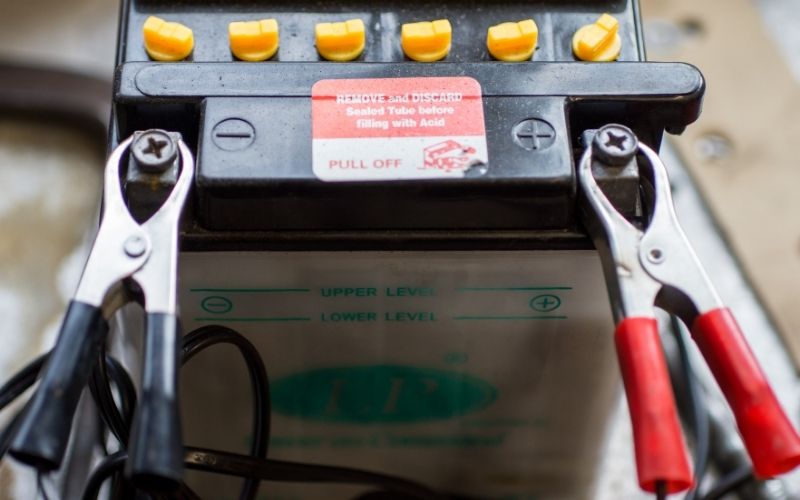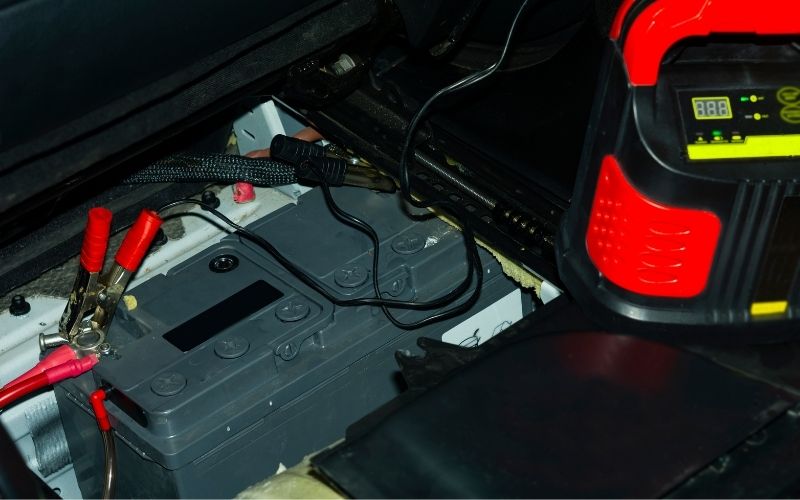You have tried the other charger types to charge your marine battery. This includes a trickle charger and a .
Now, you want to see if you can charge your marine battery with a regular charger. But are there any cons to using a regular charger? Is there a step-by-step guide to completing the task?
You are also curious if a 12-volt charger will be effective. Your goal is to determine the best method to charge a marine battery.
With that determination, you can spend more time on your real passion: boating and catching fish!
So can a marine battery be charged with a regular battery charger? Yes, this can be accomplished. But is this your best option?
Unfortunately, it is not. When a battery is charging, heat is produced. A large amount of heat is produced in a short amount of time.
Marine batteries are not built to withstand the heat that is produced as rapidly as a regular battery charger produces. So your marine battery may never charge to full capacity.
You may disagree if you have attempted to charge a marine battery with a regular battery charger. You may believe that the battery has charged to capacity. The charger may have even indicated that the marine battery was fully charged.
But this reading would have been inaccurate. This is because the full charge reading would have come prematurely, showing that the charge is complete when the battery has not reached its peak charge.
Table of Contents
What Happens If You Do?

So you can charge a marine battery with a regular battery charger, but it is not an efficient, accurate, or prudent way to charge it.
Instead, the best way to charge a marine battery is with a slow charge. You do not want excess heat to accumulate. It is also important that your battery charges completely.
Imagine, for example, that you do charge the battery with a regular charger. You look at the charge indicator and you see that it is fully charged.
Later, you are out on the water, far away from land. You look up at the sky and notice that it is getting dark.
You feel a breeze picking up, and your boating experience tells you that a storm is coming. You have been drifting for a while with your motor off.
You decide it is time to head back. So you try to start your engine. But because your battery is not really charged to the level you thought it was, your engine doesn’t start.
The next thing you know, you are on a three-hour tour, just like Gilligan!
Why You Should Rely On The Correct Charger?

It is best to use a specific battery charger for your battery. If your battery is an AGM, or absorbent glass mat, use an AGM battery charger. The same holds true for flooded or lithium batteries. Specific chargers are designed for these batteries because of their different functions.
That way, you can be confident that the battery is fully charged when the charge indicator says it is. Batteries that do not maintain a full charge eventually become sulfated. Sulfated batteries may lose the ability to reach a full charge altogether.
The importance of using a correct charger is better illustrated by comparing deep cycle batteries with regular batteries. The plates on deep cycle batteries are thicker than those on regular batteries.
The paste material inside of these plates is also thicker in deep cycle batteries. Regular batteries have thinner plates. This allows for maximum current bursts, which causes the motor to start.
A deep cycle battery requires a slow start, while a regular battery requires a faster charge. Charging a deep cycle battery with a faster-than-required charger can cause cell damage.
With deep cycle batteries, time is needed for the acid inside to penetrate the battery plates. So a regular charger may provide a faster charge, but it also does long-term damage if it is used repeatedly.
Still, the typical cost savings make using a regular charger tempting. Consider that not using the correct battery type will result in purchasing more batteries.
So, short term, your marine battery does get charged by using a regular battery charger. But, long term, you are damaging your battery and adding expense.
If you only plan to stay in boating for a short time, then this is not a concern. But you bought your boat for long-term use, right?
So why not invest in the correct charger for your battery type, and make it last long term, as well?
Reliable Alternatives

If you are going to use a regular charger, a good choice is the Pro Mariner Gen 3 Pro Sport 20 Amp charger. This charger provides high amps for a fast charge.
It is waterproof, making it ideal for marine use. Its on-demand technology means you can get the maximum use of the available amps, allowing you to charge more than one battery at a time. It automatically distributes between the batteries being charged.
Because of its advanced troubleshooting mechanism, you can say goodbye to technical problems.
It is lightweight and compact, with an aluminum design, making it easy to carry. The model includes safety fuses, reverse polarity, and ignition protection. It guards against overload, over-temperature, and over-voltage.
The digital display allows you to get a quick and accurate reading of the progress of the charge.
Another reliable charger is the Minn Kota Digital On board charger. This model is also light and compact. It includes two banks. Each bank has five amps.
It utilizes multi-stage charging technology. This includes bulk charge, absorption charge, and finish charge stages. This means constant current is used along with constant voltage.
There is no need to worry about reliability, as the unit is saltwater tested. It is also resistant to corrosion. It even includes a microprocessor to give added protection to your battery.
You can just sit back and relax and leave the charging job to the Minn Kota Digital onboard charger. That way, you can concentrate on the water traffic around you.
What Are The Steps?

Charging a marine battery with a regular battery charge is simple if you follow the correct steps.
First, connect the negative connector on the battery charger to the negative terminal on the battery.
Next, connect the positive connector on the battery charger to the positive battery terminal.
Be sure that your charger is connected to a power source. Use an extension cord if your charger requires one.
Choose the fast charge setting on the battery charge. For a fast charge, choose 15 amps or more.
Observe the voltage indicator. Allow the charging to continue until the indicator reveals a 100% charge.
Disconnect the connectors from the battery.
Finally, disconnect the power cord if your charger requires one.
You have now completed charging your marine battery with a regular battery charger.
For a visual explanation, view this easy to follow youtube video:
It is possible to charge a marine battery with a 12-volt charger. But it is best to take the proper precautions. Be sure that the battery adheres to an appropriate conditioning and maintenance program.
For example, you cannot charge a 24-volt battery with a 12-volt charger, without using a boost converter to supply the total amount of voltage that is needed.
Be sure to follow the recommendations on both your battery and your charger manuals. Should you have any concerns, it is wise to check with an expert at your local marine store to be sure that your type of marine battery is compatible with the type of charger you are using.
Conclusion
So you can use a regular battery charger to charge a marine battery. But specific chargers are designed for specific battery types, therefore, you should use the correct type of charger for the type of battery that you are charging.
If you choose to use a regular battery charger, Pro Mariner and Minn Kota offer dependable options.
But you did not get into boating to worry if using the wrong charger will render your components inoperable and, worse yet, leave you stranded. So, use the charger designed for your battery type. That way, you can relax and enjoy the ride.

I created this site to help people – to help you – with your boat problems. Instead of helping one person at a time, I want this website to be the “one-stop-shop” for everyone’s boating concerns. Read more.

